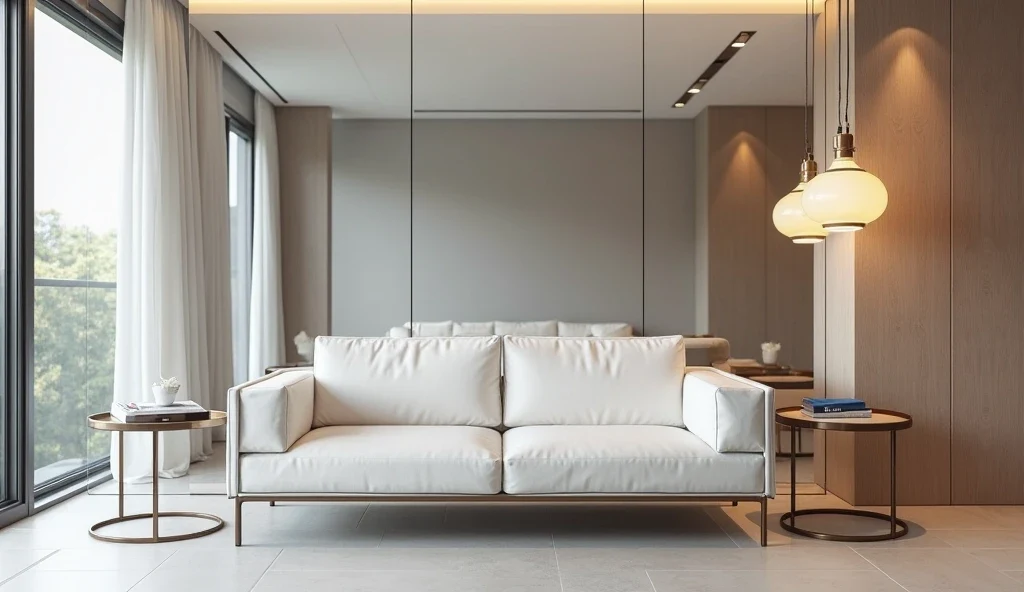Stare at your small living room for five minutes and you’ll probably feel that familiar frustration: everything’s crammed together, there’s nowhere to put anything, and somehow the space manages to feel both cluttered and empty at the same time. You’ve tried rearranging the furniture seventeen different ways, but nothing quite clicks.
Most small living rooms suffer from the same fundamental problem—owners treat them like failed large living rooms instead of embracing what compact spaces can actually offer. We try to cram in everything a bigger room would have, then wonder why it feels chaotic and uncomfortable instead of cozy and intentional.
But here’s what changes the game completely: small living rooms aren’t about fitting everything in—they’re about choosing the right things and arranging them so well that the space feels purposeful rather than cramped.
Whether you’re dealing with a studio apartment where your living room is also your bedroom and dining room, or a tiny house where every square foot counts, these design strategies will help you create something that feels like an actual retreat rather than a place you’re just trying to survive. Ready to stop fighting your small space and start making it work for you?
Forget Everything You Think You Know About Small Spaces
Before we dive into specific solutions, let’s address the myths that keep most small living rooms from reaching their potential. The conventional wisdom about small space design is often completely wrong.
“Light Colors Make Spaces Look Bigger” is Overrated – While light colors can help, they’re not magic. A poorly designed room in all white still looks poorly designed. Focus on proportion and function first, color second.
Less Isn’t Always More – Sometimes small spaces need bold choices to feel intentional rather than incomplete. A single statement element can make a tiny room feel more finished than multiple small, safe choices.
Function Should Drive Every Decision – Every piece of furniture needs to earn its place by serving multiple purposes or bringing significant joy. There’s no room for anything that’s just taking up space.
Design With Spatial Intelligence
The most successful small living rooms use professional design principles that maximize both function and visual impact within tight constraints.
Create Visual Flow, Not Obstacles – Arrange furniture to guide movement through the space rather than blocking it. Even in tiny rooms, circulation patterns matter for how comfortable the space feels.
Use Scale Strategically – Sometimes larger furniture works better than multiple small pieces. A single substantial sofa can look more intentional than three small chairs fighting for space.
Prioritize What You Actually Do – Design around your real life, not aspirational living. If you never entertain, don’t sacrifice daily comfort for hosting capability you won’t use.
Layer Solutions That Work Together
This is where random furniture placement becomes intentional design—understanding how every element should support your space’s overall success.
Vertical Space is Your Secret Weapon – Most people only think about floor space, but walls and ceiling height offer opportunities to add storage, display, and visual interest without crowding.
Multifunctional Elements Save Everything – Choose pieces that solve multiple problems simultaneously. Storage ottomans, extendable tables, and wall-mounted desks maximize utility without adding clutter.
Light Layering Creates Atmosphere – Multiple light sources at different heights make small spaces feel larger and more complex than single overhead fixtures ever could.
13 Small Living Room Design Ideas
Idea 1: Minimalist Foundation
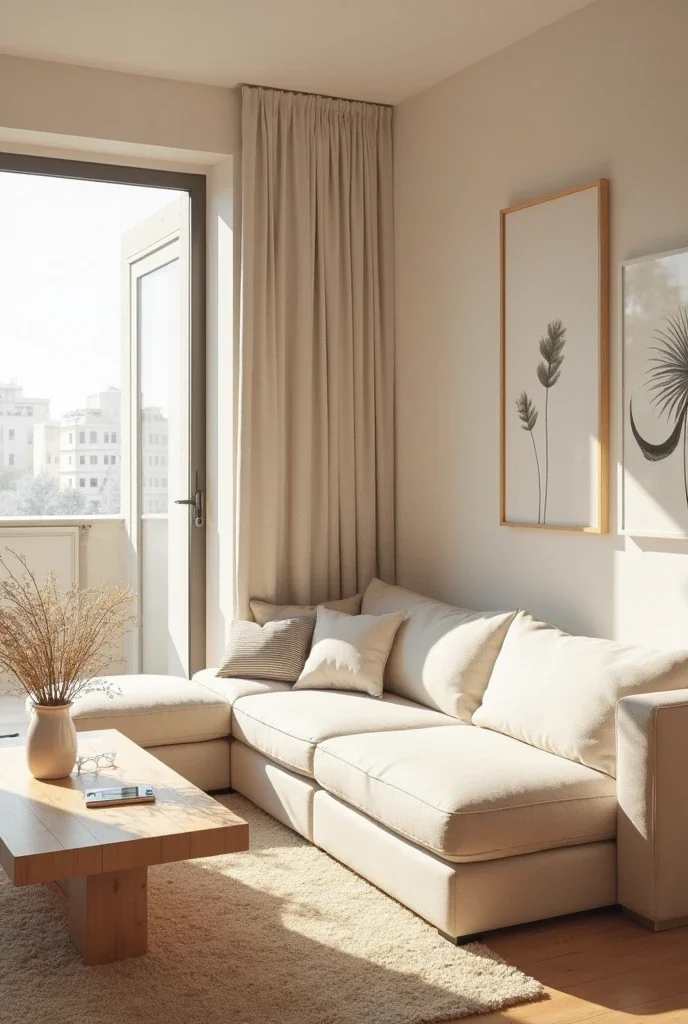
Build your room around a low-profile sofa, simple coffee table, and carefully chosen accessories that create calm rather than chaos. The key is selecting pieces with clean lines that don’t visually compete for attention.
Choose furniture proportions that fit your space rather than trying to squeeze standard-sized pieces into non-standard areas. Custom or apartment-scale furniture often works better than forcing regular furniture to fit.
Keep surfaces mostly clear and use hidden storage to maintain the serene aesthetic while accommodating real life’s necessary clutter and daily items.
Idea 2: Bold Accent Wall
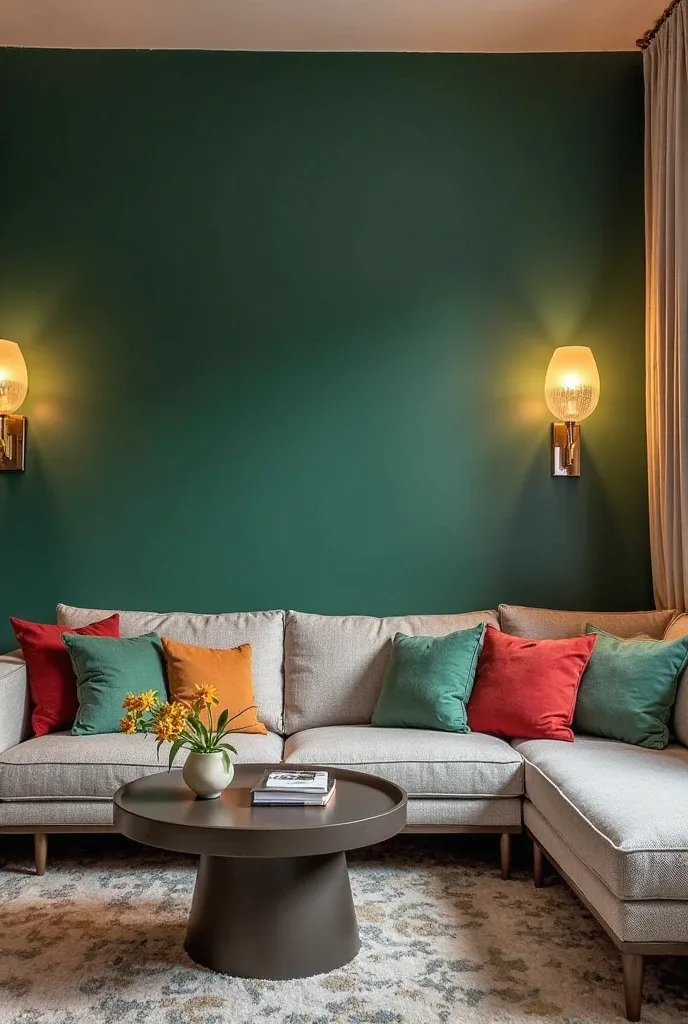
Paint one wall in a rich, dramatic color that gives your small space a focal point and sense of purpose. This works particularly well behind your sofa or opposite the entrance.
The contrast between one bold wall and neutral surrounding surfaces creates depth and interest without overwhelming your limited square footage. Choose colors that make you feel energized rather than claustrophobic.
Balance the bold wall with neutral furniture and accessories, letting the color provide personality while keeping the overall space feeling cohesive rather than chaotic.
Idea 3: Floor-to-Ceiling Storage
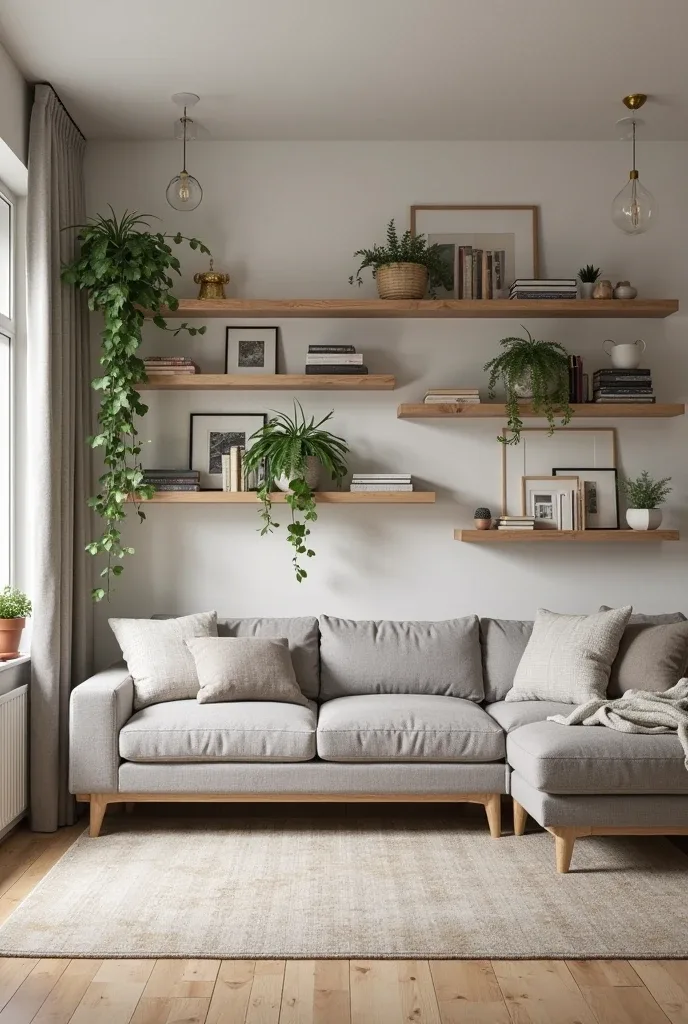
Install floating shelves that cover an entire wall, providing extensive storage and display space without taking up precious floor area. This approach works particularly well for book collections, decorative objects, and everyday items.
Choose shelving in materials that complement your furniture rather than compete with it. Wood shelves warm up modern spaces, while sleek metal works in industrial or contemporary rooms.
Style shelves thoughtfully with a mix of books, plants, and personal objects arranged to create visual rhythm rather than random clutter scattered across multiple surfaces.
Idea 4: Transparent Furniture
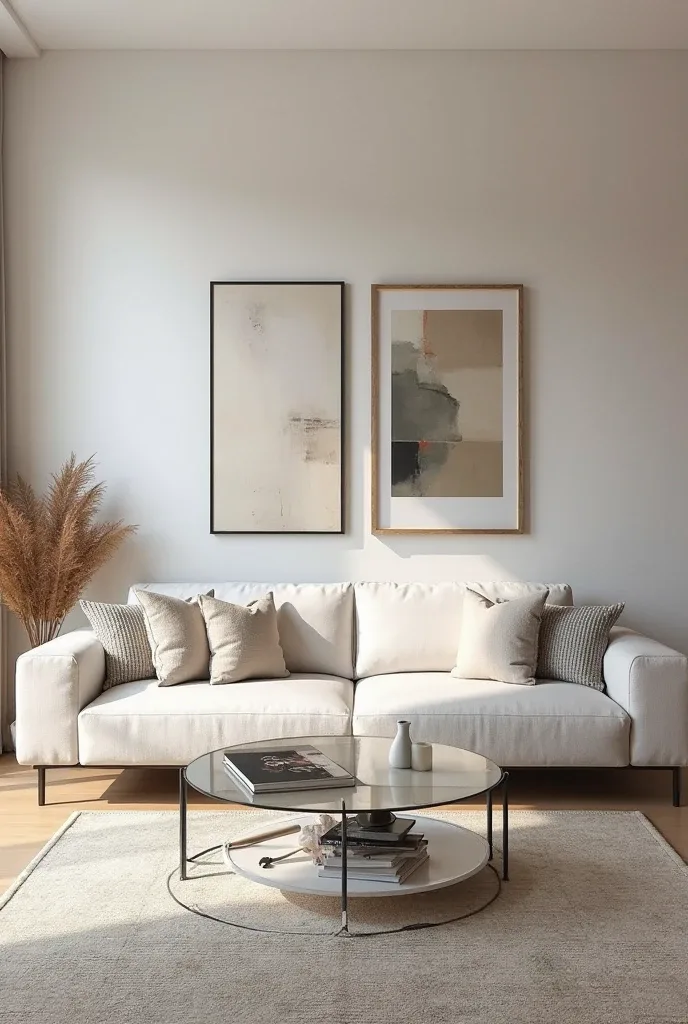
Use a glass coffee table, acrylic side tables, or other transparent furniture that provides function without blocking sight lines through your room. This creates the illusion of more space while maintaining necessary functionality.
The key is balancing transparent pieces with solid, grounding elements so your room doesn’t feel like it’s floating. Mix glass tables with substantial seating or solid storage pieces.
Keep transparent surfaces clean and uncluttered since everything shows. This approach works best for people who naturally maintain tidy spaces rather than those who need concealed storage.
Idea 5: Window Seat
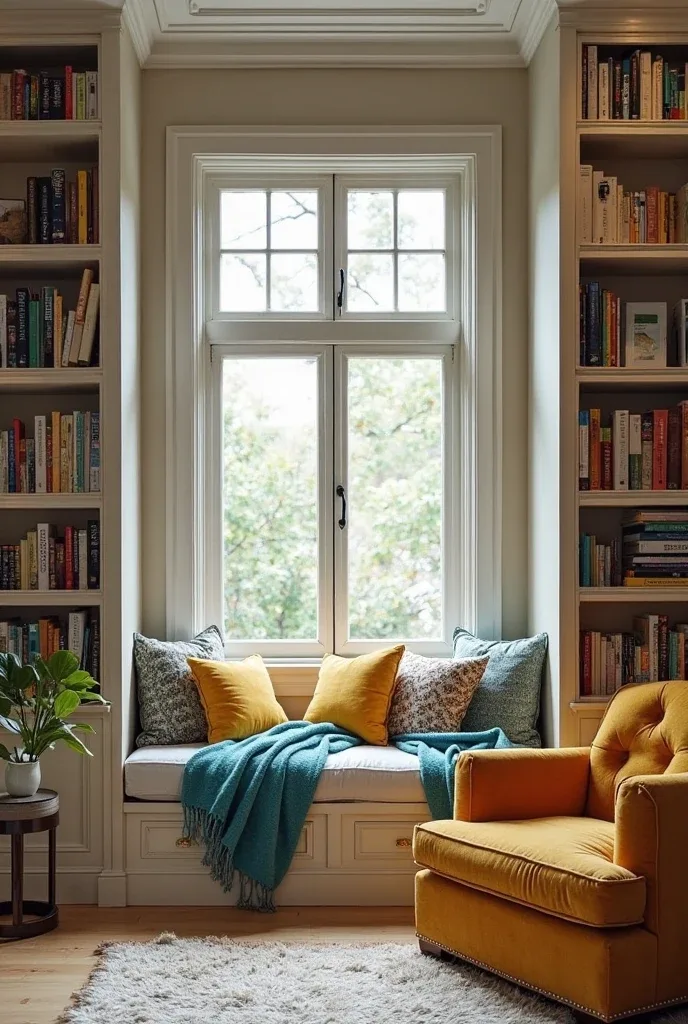
Build or install a window seat with built-in storage that transforms an awkward alcove or underutilized window area into valuable seating and storage space.
Add comfortable cushions and pillows that coordinate with your overall color scheme while creating a cozy reading nook that serves multiple functions throughout the day.
This works particularly well in small spaces where you need every area to contribute to your room’s functionality rather than just existing as dead space.
Idea 6: Modular Seating
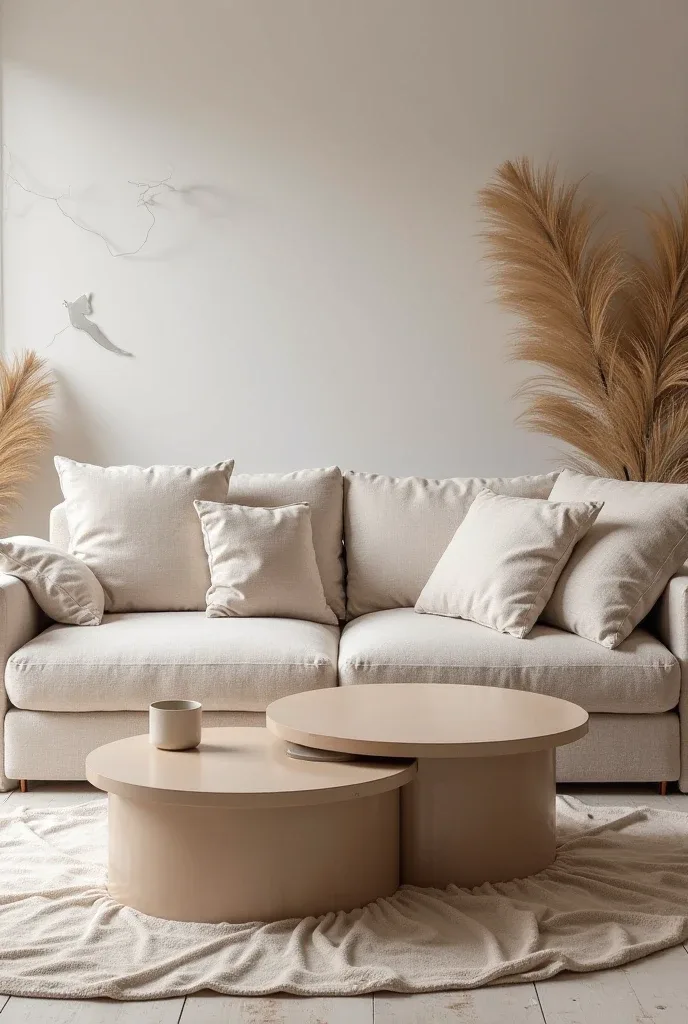
Choose sectional or modular furniture that can be reconfigured for different activities—movie watching, entertaining, or daily relaxation. Many pieces also include hidden storage compartments.
Look for ottomans that double as coffee tables, benches with storage inside, or chairs that nest when not needed. Flexibility becomes crucial when space is limited.
Select neutral upholstery that works with various arrangements and decorative pillows that can change the mood without requiring new furniture purchases.
Idea 7: All-White Strategy
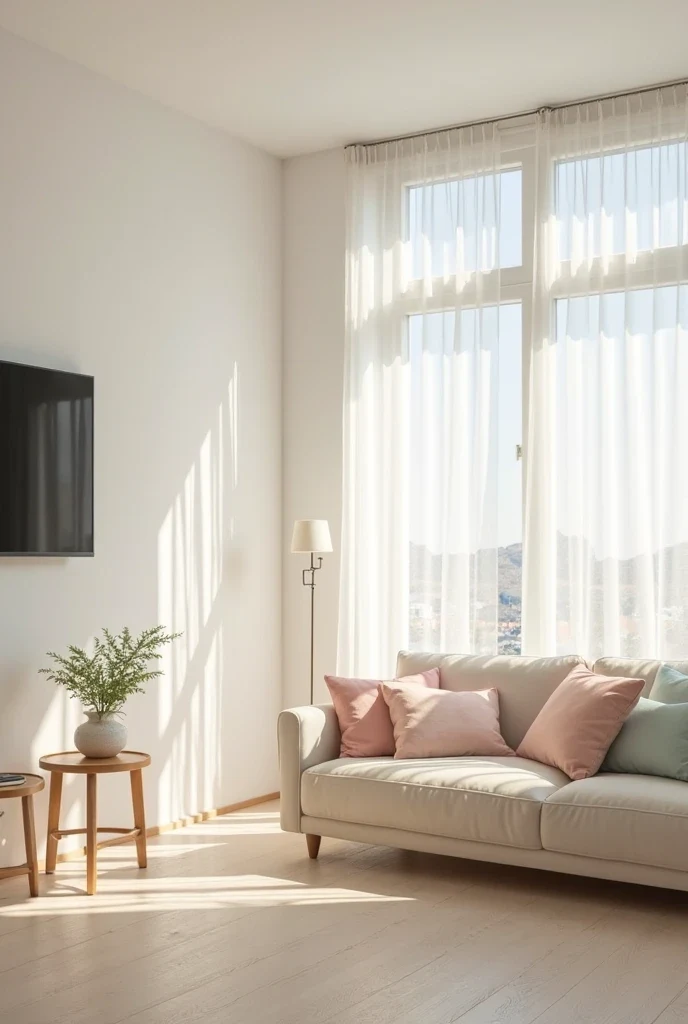
Create a light, airy feeling with white or very pale walls, furniture, and major surfaces. This approach works particularly well in rooms with limited natural light.
Add texture through fabrics, rugs, and accessories to prevent the space from feeling sterile or incomplete. Mix different whites and creams for depth rather than using stark, matching whites throughout.
Introduce subtle color through plants, artwork, or seasonal accessories that can change without disrupting your light, spacious foundation.
Idea 8: Statement Rug
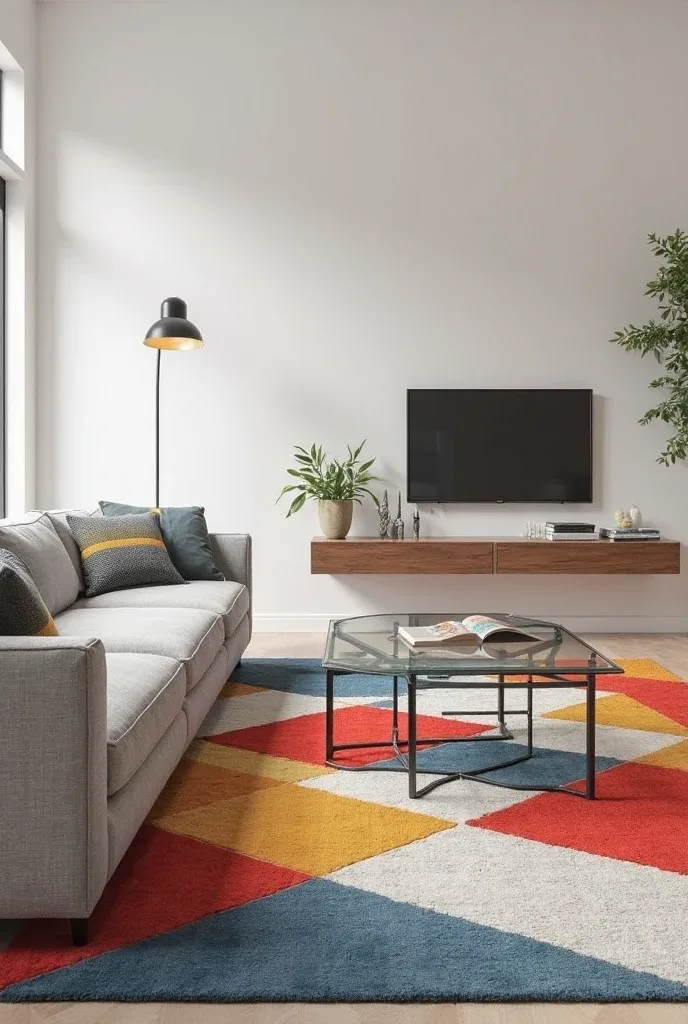
Choose a bold, patterned rug that becomes your room’s focal point while defining the seating area and adding visual interest to neutral furniture and walls.
Size your rug appropriately—too small makes the space look choppy, while the right size pulls everything together visually. Front furniture legs should sit on the rug in most arrangements.
Balance a busy rug with simpler furniture and accessories, letting the floor become your artwork while keeping other surfaces relatively calm and uncluttered.
Idea 9: Mirrored Wall
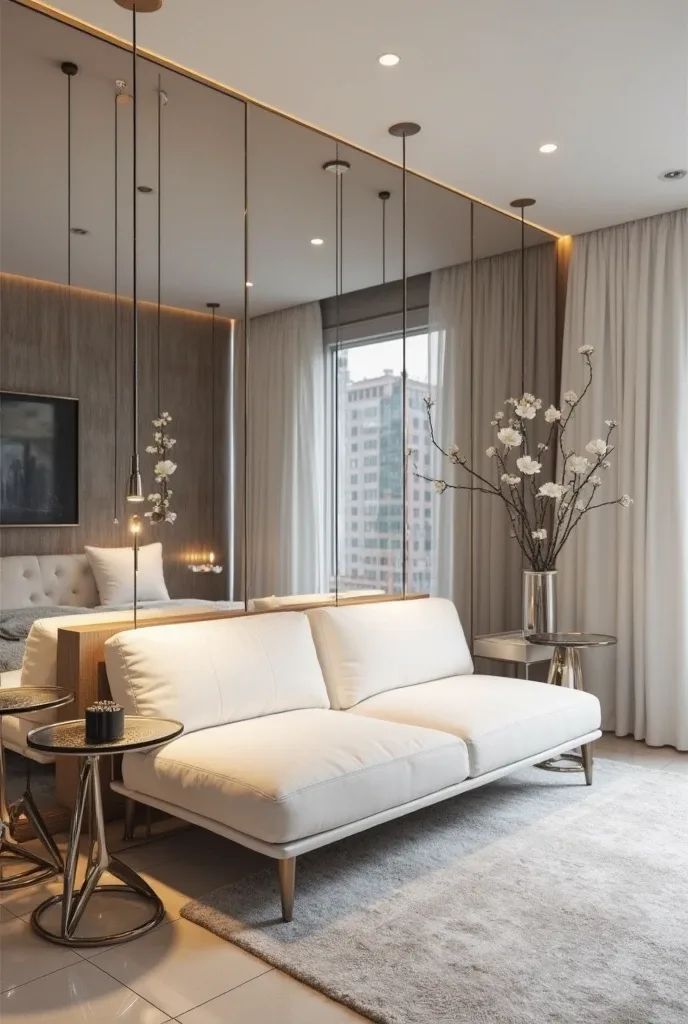
Install mirrors strategically to reflect light and create the illusion of expanded space. A full mirrored wall can make tiny rooms feel significantly larger while adding glamour.
Position mirrors to reflect attractive views or interesting architectural elements rather than cluttered areas that would detract from the illusion you’re trying to create.
Choose mirror frames that complement your overall aesthetic, or use frameless mirrors for a sleeker, more contemporary look that doesn’t compete with other decorative elements.
Idea 10: Corner Maximization
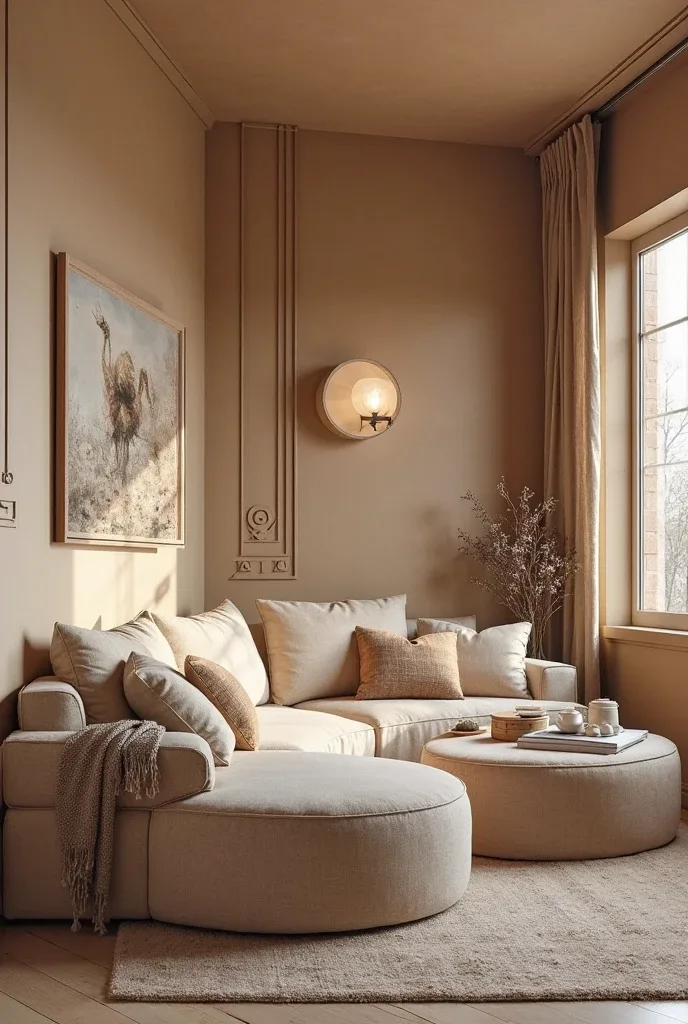
Design your seating arrangement around corners rather than fighting them. L-shaped sectionals or built-in corner seating can provide maximum seating capacity in minimal floor space.
Add a round ottoman or coffee table that allows easy movement around the corner seating while providing surface space for drinks, books, and other daily necessities.
Use corner walls for additional storage or display, ensuring every area of your small space contributes to both function and aesthetic appeal.
Also Read: 13 Sage Green Kitchen Design Ideas That Prove This Color Does More Than Just Look Pretty
Idea 11: Gallery Wall
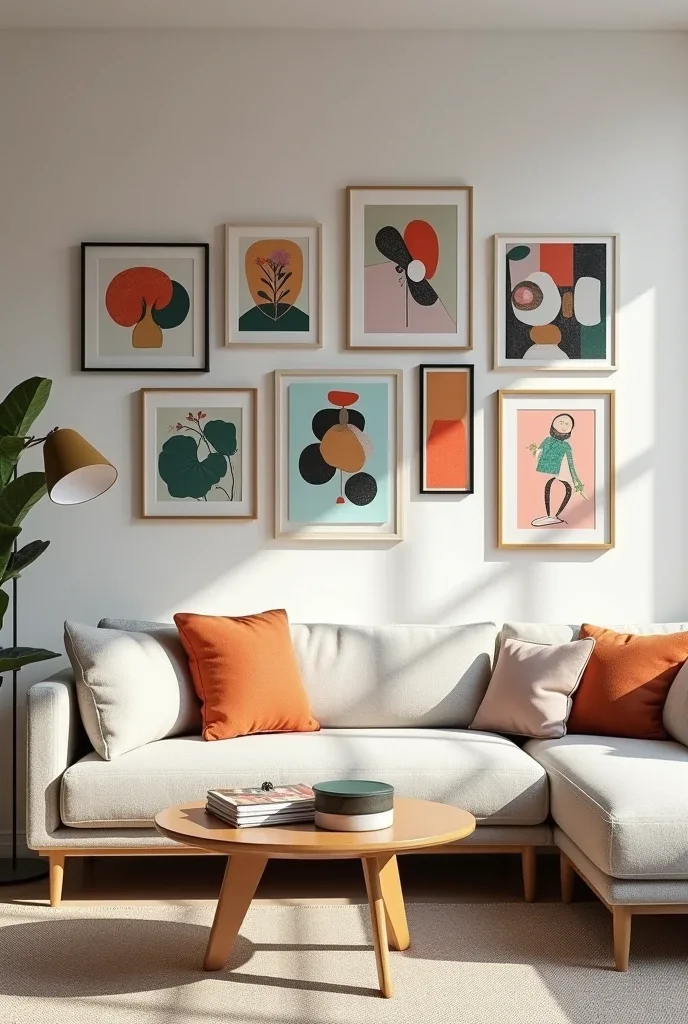
Create a curated gallery wall that adds visual interest and personal expression without taking up any precious floor or surface space in your compact room.
Choose artwork and frames that work together cohesively rather than collecting random pieces. A unified color palette or consistent framing style creates more impact than scattered, unrelated pieces.
Position your gallery wall at the right height for viewing while seated, since that’s how you’ll see it most often in your living room setting.
Idea 12: Natural Materials
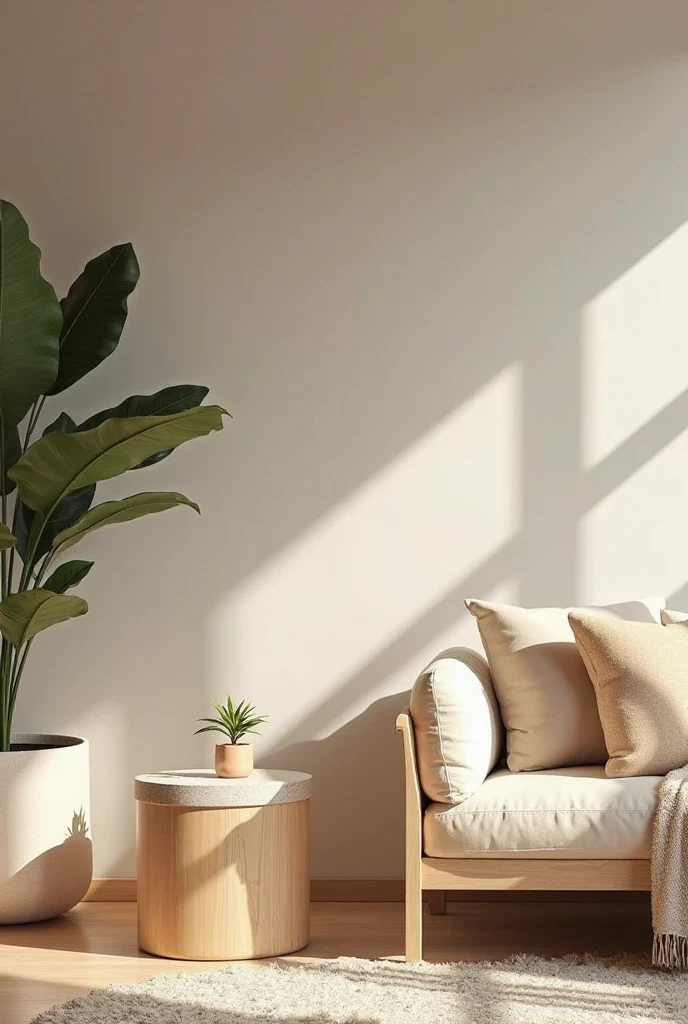
Incorporate light wood furniture, natural fiber rugs, and organic textures that warm up small spaces without making them feel heavy or dark.
Choose furniture with legs that elevate pieces off the floor, creating visual lightness and making your space easier to clean while maintaining the feeling of openness.
Add plants and natural materials that connect your interior to the outdoors, making your small space feel less confined and more connected to the larger world.
Idea 13: Statement Lighting
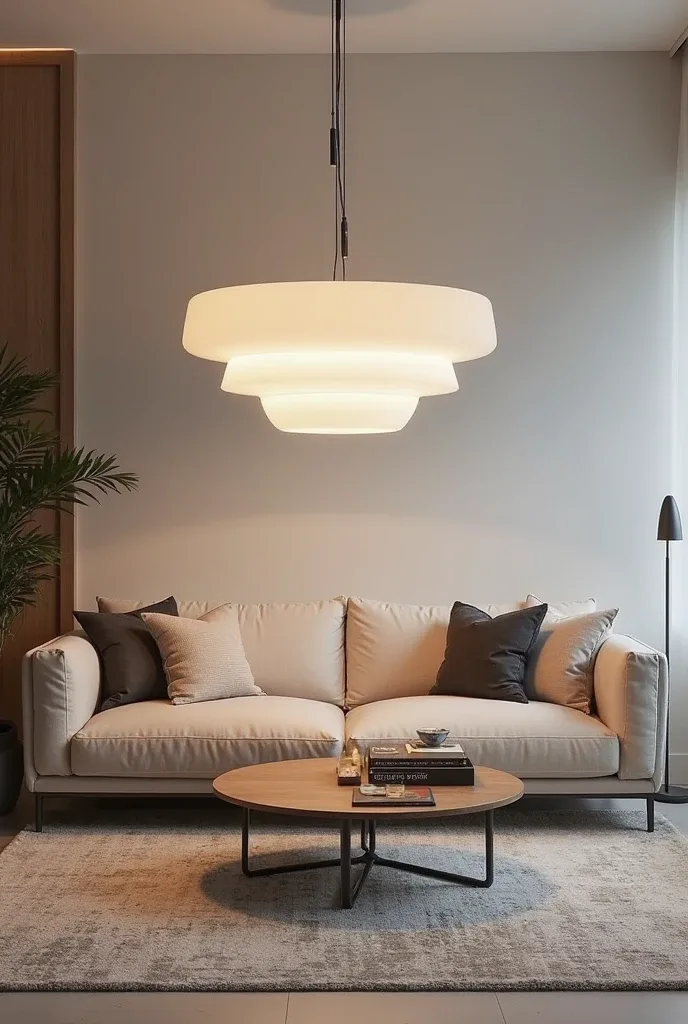
Install an oversized pendant light, chandelier, or sculptural floor lamp that becomes a focal point while providing necessary illumination for your compact space.
Choose lighting that’s proportionally bold enough to anchor your room without overwhelming it. Sometimes small spaces can handle dramatic elements better than timid ones.
Layer your statement lighting with task and ambient lighting to create a complete lighting scheme that makes your small room feel sophisticated and well-designed.
Final Thoughts
Creating a small living room that actually works isn’t about following rules you’ve read or copying magazine photos of spaces nothing like yours. It’s about understanding your specific needs and constraints, then making design decisions that serve both your daily life and your aesthetic goals.
The most successful small living rooms feel purposeful rather than cramped, cozy rather than claustrophobic. When you stop trying to make your small space look bigger and start making it work better, you often end up with something that feels more satisfying than many larger rooms.
Remember, some of the most memorable and comfortable spaces in the world are small. Size doesn’t determine quality—thoughtful design does. Your small living room can become the most beloved space in your home when every element serves a purpose and contributes to an atmosphere you genuinely enjoy.

